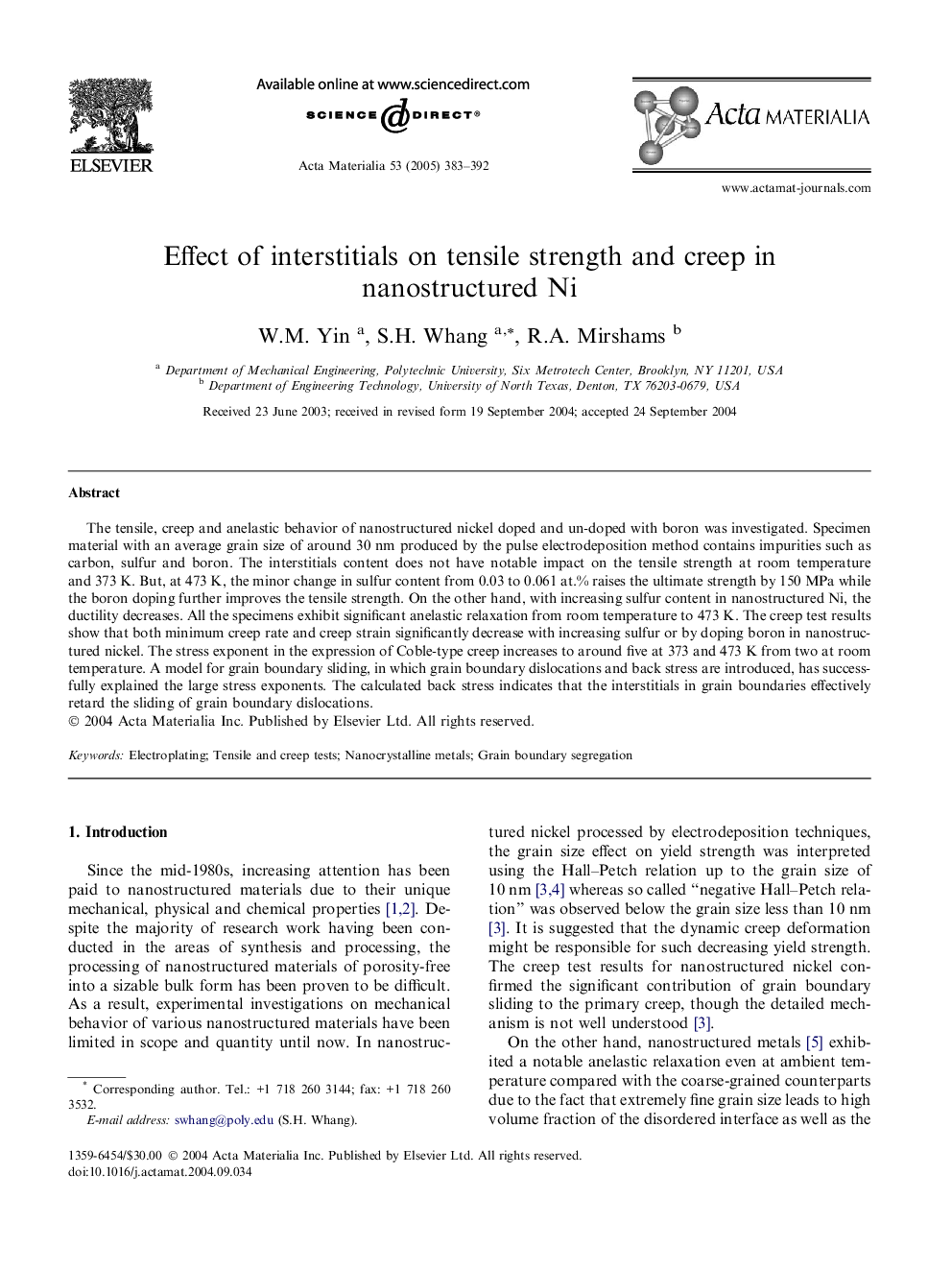| Article ID | Journal | Published Year | Pages | File Type |
|---|---|---|---|---|
| 10620964 | Acta Materialia | 2005 | 10 Pages |
Abstract
The tensile, creep and anelastic behavior of nanostructured nickel doped and un-doped with boron was investigated. Specimen material with an average grain size of around 30 nm produced by the pulse electrodeposition method contains impurities such as carbon, sulfur and boron. The interstitials content does not have notable impact on the tensile strength at room temperature and 373 K. But, at 473 K, the minor change in sulfur content from 0.03 to 0.061 at.% raises the ultimate strength by 150 MPa while the boron doping further improves the tensile strength. On the other hand, with increasing sulfur content in nanostructured Ni, the ductility decreases. All the specimens exhibit significant anelastic relaxation from room temperature to 473 K. The creep test results show that both minimum creep rate and creep strain significantly decrease with increasing sulfur or by doping boron in nanostructured nickel. The stress exponent in the expression of Coble-type creep increases to around five at 373 and 473 K from two at room temperature. A model for grain boundary sliding, in which grain boundary dislocations and back stress are introduced, has successfully explained the large stress exponents. The calculated back stress indicates that the interstitials in grain boundaries effectively retard the sliding of grain boundary dislocations.
Related Topics
Physical Sciences and Engineering
Materials Science
Ceramics and Composites
Authors
W.M. Yin, S.H. Whang, R.A. Mirshams,
